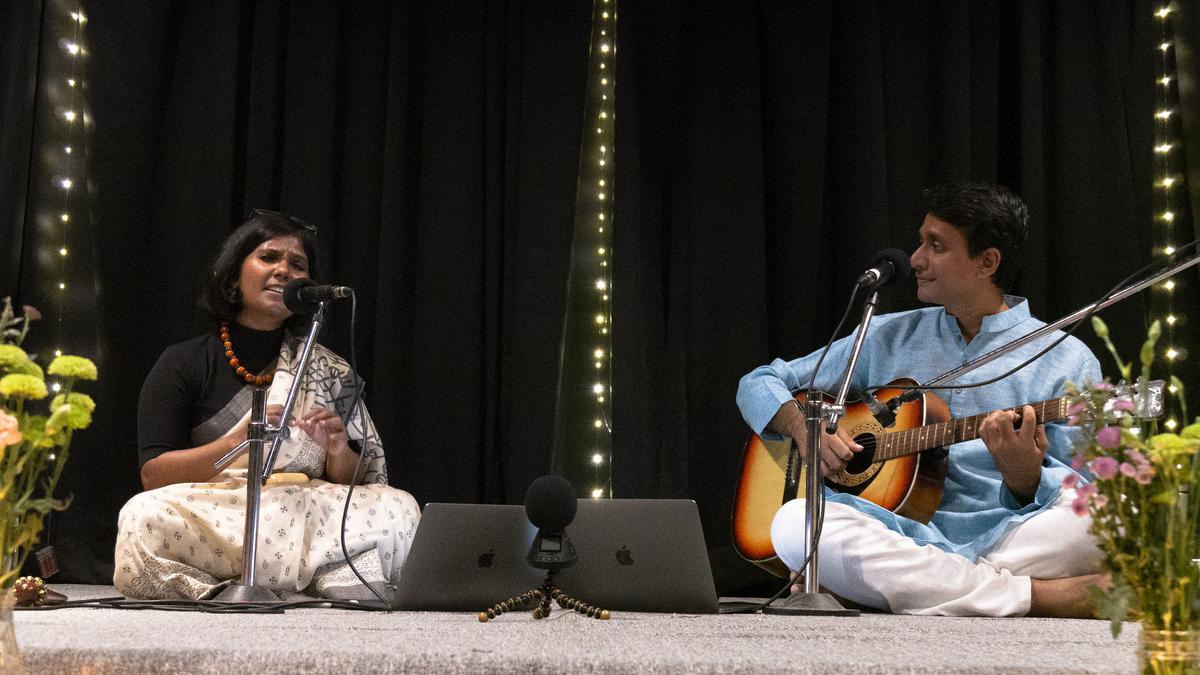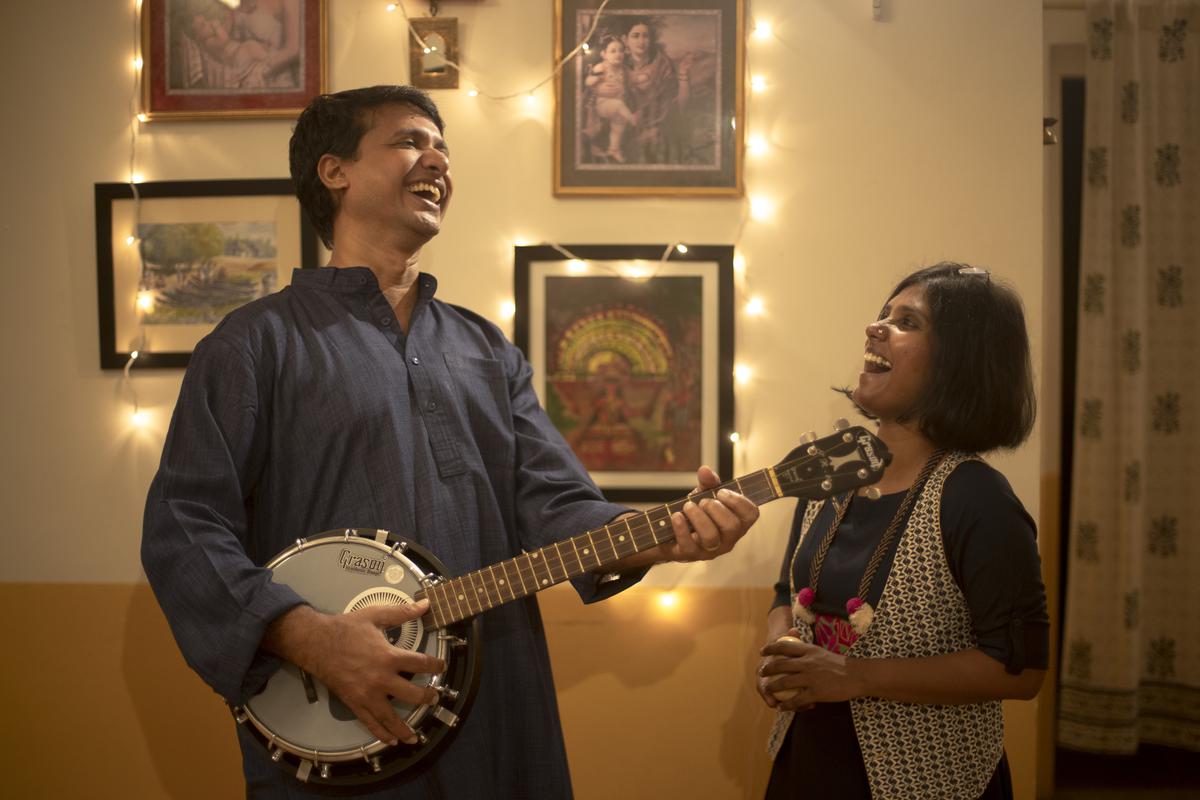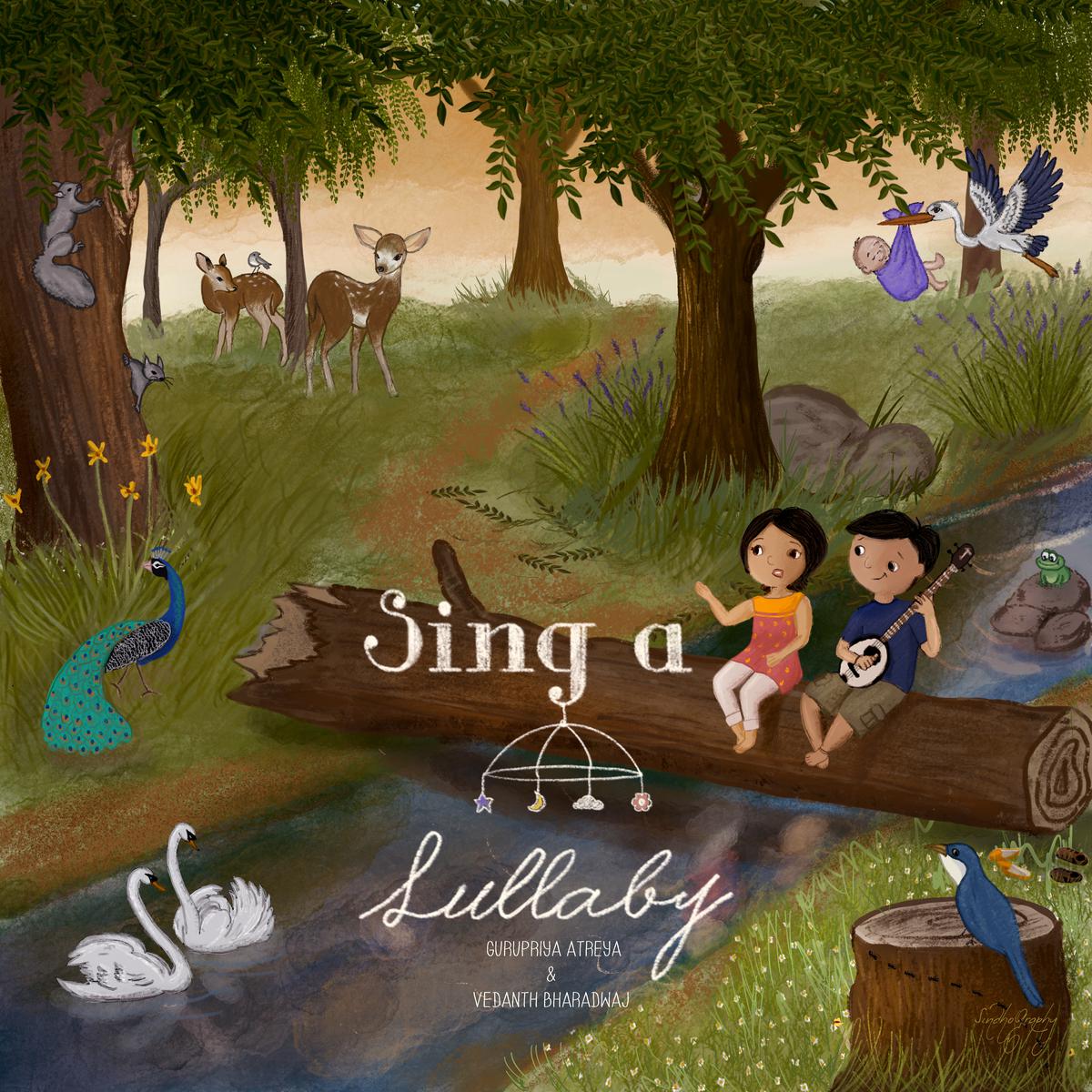- October 24, 2023
Meet the musicians who sing only lullabies at their concerts

Vedanth Bharadwaj and Gurupriya Atreya.
| Photo Credit: Special Arrangement
It was a concert like none other. The house-lights were switched off, yes, but there was no stage and barely any chairs. Off-centre was a dimly lit island of gently released breath and softly sung songs. There sat two singers, cross-legged, but no performers were present. The singers did not care for attention or applause from the audience that was sprawled out in the darkness — some covered with blankets, others curled up against pillows. The singers seemed to soak in the songs as the audience floated off into pleasant dreams.
The Lullaby concert by Vedanth Bharadwaj and Gurupriya Atreya, held recently in Bengaluru, brought much healing to frazzled nerves and fretting minds. From the lullabies chosen to the overall design of the concert, it seemed like an invitation to switch off and simply relax.
From a mother lamenting her baby’s tantrums to rebukes directed at an endlessly chirping bird to let a lover sleep, the lullabies depicted scenes from the lives of caregivers, parents and lovers. They cut straight through the barriers of time, location, age, language, culture and class. Set in words or gibberish, the lullabies brought alive similar yearnings and aspirations from the most dissimilar cultural contexts. They were steeped in emotions ranging from love and loneliness to frustration and desperation (for the baby to sleep or grow up).
“Lullabies have to first relax and soothe the singer,” said Vedanth and Gurupriya, demonstrating the same with every note they sang during a lullaby workshop held earlier in the day. Since children and even infants can sense dissonance and echo that state, becoming relaxed or meditative is essential to singing lullabies, they added, as they led the participants through four lullabies — one each in Bangla, Spanish, Sinhalese and Braj basha.

Vedanth Bharadwaj and Gurupriya Atreya
| Photo Credit:
Special Arrangement
One lullaby was a reminder that a young mother can ask for support while another described in ornate language, a cradle that needed to be crafted from the finest wood so everyone would stop and exclaim at its beauty. Yet another mused, with the baby, about where the mother had gone (gently suggesting that she will return with a pot of milk), while another hushed the baby to sleep with a description of activities at the gates of heaven.
“You have to be gentle and genuine while singing a lullaby,” said Vedanth of his “most favourite and unique musical genre.” Having been an avid lullaby collector for many years, Vedanth wanted to make an album when his daughter was born and invited Gurupriya to be a collaborator. It did not happen then or even after two years when Gurupriya’s daughter was born.
It was during the lockdown that the ‘Sing a Lullaby’ project finally took off. A social media post triggered expressions of interest from the world over and a community of about 450 “lullabiers” came together, 400 songs were collected and 52 songs were taught and learnt over the next 52 weeks.

Gurupriya recalls how daunted she was at the prospect of teaching a new lullaby every Tuesday night for a whole year when, between them, Vedanth and she knew only seven to eight to start with. She learnt “consistency” and to “just show up every Tuesday,” she said.
A rhythm of learning and teaching emerged when they began. Wednesday would be a day off. On Thursday they’d start working on choosing and learning the lullaby to teach the next week. This, according to Vedanth, turned out to be “the most exciting part of the work — learning the meaning, pronunciation, tuning or maintaining the original melody because it had been passed down as oral history.”
Online workshops
Guest artistes were sometimes invited to teach during the online workshops. A lullaby taught by Mir Basu Khan, a folk practitioner from Rajasthan, is a favourite, Vedanth shared, because it combines ululations with the natural sounds of a baby crying — all organically woven into the song. Vedanth’s rendition of this Saraiki lullaby at the recent concert stood out for how it conjured up vast expanses of a desert even while seeming to come from an ancient, timeless place.
All the lullabies carried warm imprints of community singing and collectively churned wisdom. What was also remarkable about the concert is how musicians, researchers and folk practitioners who taught them the lullabies were duly credited.
Vedanth and Gurupriya also “dress down” for concerts, work on “erasing duality” by getting rid of the stage and “envelope the audience” with carefully curated, low volume sound through strategically placed speakers. There was much evidence of all these measures working because the audience was lulled and not once during the concert did anyone clap.




